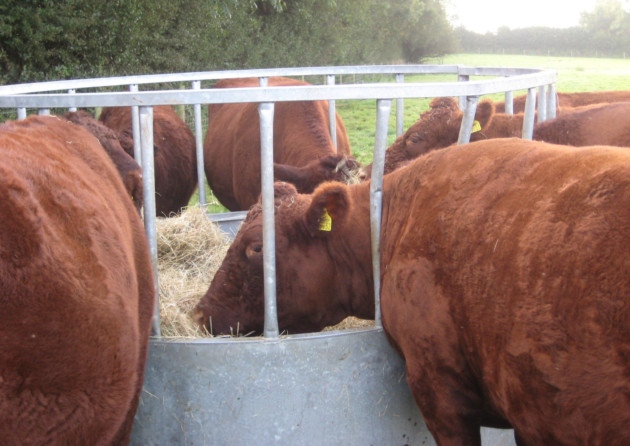Supplementing Beef Cattle At Grass
29 August 2019As summer progresses the quantity and nutritional quality of grass declines. The rate at which this happens depends on many factors such as the weather, age of the sward and how it has been managed. If swards are overgrown and stemmy then there may not be enough quality to grow animals on and likewise if there grass is below 7 cm then animal growth rate will be declining on grass alone. To maintain growth rates it is necessary to supplement the grazing at some stage as the season progresses, the timing will very much vary from farm to farm. It is important to consider this as concentrates simply substitute grass intakes and make weight gain more expensive.
The level of grass supplementation will depend on:
- The type of cattle and target growth rates
- The amount of grass available
- The growing season and how grass is managed
What are the aims for your cattle?
Finishing cattle targeting upwards of 1 kg daily liveweight gain will now need supplemented at grass. If grass is in low supply or of poor quality, then consider putting out an ad-lib hopper with concentrates – take care to introduce feeding slowly and to cattle that have a full belly to avoid gorging and then make sure hoppers do not run out thereafter otherwise this process needs to be repeated.
If feeding ad-lib, it is advisable to have a ring of straw available as long roughage if grass is poor, or on a wet day when cattle will tend to congregate round a feeder rather than graze.
Bringing them in the house to finish may also be an option. If grass remains plentiful and of good quality in some areas growing cattle could still be growing at up to 0.8 kg/day gain. However, this requires good growing conditions and very well managed grazing.
As a simple rule of thumb, later on in the season – where feeding concentrates alongside grass – if grass is reasonably plentiful then concentrates can be fed at 0.5 kg per 100 kg live weight. Where grass supply is moderate or poor, feeding concentrates at 1 kg per 100 kg liveweight is more likely to be required. The composition of the concentrate should be high in energy and moderate for protein, around 13-14% crude protein on a fresh basis is sufficient and no more than 0.5 kg per 100 kg live weight is fed in a single feed.
Where ad-lib hoppers are introduced into fields ensure that cattle have been used to being trough fed and work up to ad-lib feeding. Cereals are cheaper this year and an obvious choice but care should be taken in balancing the cereals with protein and minerals as well as considering using a digestible fibre feed (such as sugar beet pulp or soya hulls) to start with. This will make it safer while cattle are transitioning on to ad-lib cereal based rations.
Karen Stewart, karen.stewart@sac.co.uk
Sign up to the FAS newsletter
Receive updates on news, events and publications from Scotland’s Farm Advisory Service

